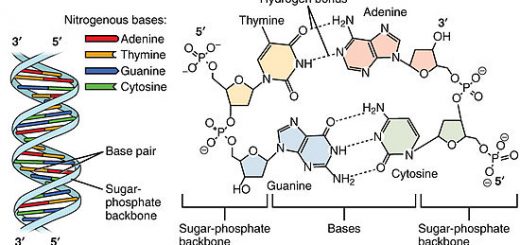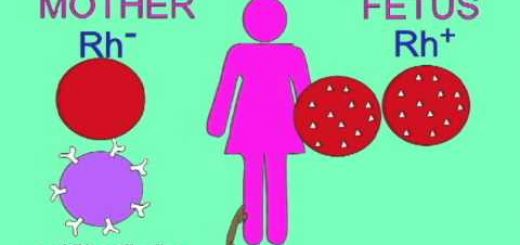Integumentary system, Skin importance, layers, types and function
Your skin protects your body from many viruses and bacteria you are exposed to daily. The skin protects you from the sun’s rays – specifically ultraviolet light – that can damage cells. healthy skin helps your body keep its temperature at a constant level. Healthy skin helps you react better to important changes around you by feeling pain or pressure.
Integumentary system
The integumentary system consists of the skin (integument), the skin appendages which include hair, nail, sweat, sebaceous & mammary glands.
Skin
The skin covers and protects the entire body, without skin, people’s muscles, bones, and organs would have no support. The skin contains lots of tissues each doing a different job, It protects your body from the dangers of the harsh environment, it keeps your body at the right temperature, and allows you to have a sense of touch.
Skin regulates the body temperature through the sweat glands, When the body becomes overheated, sweat glands give off moisture (perspiration), which cools the body as it evaporates, the body part responsible for the sense of touch, so, the skin works with the nervous system to alert the body to potential dangers by detecting pressure, pain, heat, and cold.
The skin is considered to be one of the largest organs in the body, accounting for about 16% of the body weight, it is composed of two layers of different embryonic origin and structure; however, they are firmly adherent to each other:
- The epidermis is the superficial epithelium derived from ectoderm, it is avascular but rich in sensory nerve endings for pain sensation.
- The dermis is the deeper vascular connective tissue layer derived from the mesoderm.
The epidermis
lt is a keratinized stratified squamous epithelium that is composed of four types of cells; keratinocytes, melanocytes, Langerhans’ cells, and Merkel’s cells.
Keratinocytes
- They are the most abundant population of cells in the epidermis.
- The superficial keratinized epithelial cells are continually shed off from the surface and are replaced by cells that arise from mitotic activity in the basal layer of the epidermis.
- As the cells move upwards, the keratin filaments (cytokeratin intermediate filaments) accumulate in their interior until they largely replace the metabolically-active cytoplasm and the cells die.
- This sequence of changes is called keratinization which normally takes from 15-30 days.
- If the process of keratinization occurs more rapidly e.g. within one week the superficial keratinized cells will accumulate and when desquamate they the form of thick visible scales, a common example of such condition is the dandruff of the scalp.
Microscopically, keratinocytes are arranged, starting from deeper to superficial epidermis into 5 distinct layers:
1- Stratum germinativum = stratum basale:
- It is the deepest layer formed of a single layer of low columnar cells.
- The cells of this layer have large oval nuclei, deep basophilic cytoplasm (numerous Polysomes) with frequent mitotic figures as they are responsible for the constant renewal of keratinocytes.
- The cells are attached together by desmosomes and rest on the basement membrane to which they are anchored by hemidesmosomes.
2- Stratum spinosum = prickle cell layer:
- It is formed of 5-10 layers of polyhedral cells.
- The cells show multiple spinous processes (prickles) which interdigitate and join similar processes of adjacent cells by numerous desmosomes, thus resisting the effects of friction and pressure.
3- Stratum granuiosum = granular layer:
- It consists of 3-5 layers of flattened-diamond-shaped cells with flattened nuclei. The long axis of these cells is parallel to the skin surface.
- The cytoplasm contains the deeply basophilic keratohyaline granules; they are non-membrane-bounded which serve for packing keratin filaments together.
- The cytoplasm also contains the membrane-bounded lamellated granules. Synthesis of these granules starts in stratum spinosum and they increase in number in stratum granulosum, collect near the cell membrane to discharge their contents in the intercellular spaces providing waterproof barrier function of the skin.
4- Stratum lucidum = clear zone:
- It consists of few (2-3) layers of flattened, lightly- stained cells that appear as a clear strip above the stratum granulosum.
- The nuclei and the organelles are degenerating, the cytoplasm contains densely- packed keratin filaments oriented parallel to the surface of the skin.
5- Sratum corneum = horny layer:
- It is the most superficial layer formed of many (20-30) layers of flat cells in the form of eosinophilic horny scales.
- The nuclei and cytoplasmic organelles disappear and are replaced by the tough keratin filaments, the cells are adherent to one another by remnants of desmosomes.
Melanocytes
The color of the skin depends on the interaction of three factors:
- The content of carotene that gives the skin a yellowish color.
- The oxygenated hemoglobin in the dermal capillaries that gives the skin a reddish tint.
- The content of melanin pigments produced by the melanocytes that give brown to black color of the skin, hair, and the iris of the eye.
Histological features:
Melanocytes are branching cells found in the epidermis, between the cells of the stratum basale, melanocytes are also found in the epidermal cells of the hair follicle.
Function:
- Melanin formation: melanin pigment accumulates in the cytoplasm within membrane-bounded melanosomes.
- Melanin transfer: the cytoplasmic processes of melanocytes transfer the melanosomes into the neighboring epidermal cells by an unusual mode called cytocrine secretion.
The racial differences in color: number of melanocytes is approximately the same in all races, however, hereditary and racial factors control the amount and the size of melanosomes produced and transferred by these cells.
Lack of pigmentation occurs in albinism, in which, melanocytes fail to form melanin, Vitiligo, a depigmentation disorder occurs due to the degeneration and disappearance of entire melanocytes.
Effect of ultraviolet rays: Melanin functions as a protective screen against the harmful ultraviolet light, thus exposure to sunlight accelerates the rate of melanin production.
Langerhans’ cells
Langerhans’ cells are members of the mononuclear phagocytic system derived from the bone marrow.
Histological features: They are branching cells with multiple cytoplasmic processes present between the cells of stratum spinosum. By LM, they appear with a highly folded irregular nucleus and pale clear cytoplasm. By EM, they have abundant lysosomes in their cytoplasm but no keratin filament and no desmosomes between the Langerhans cells and adjacent keratinocytes.
Function: Langerhans’ cells are antigen-presenting cells; they are capable of binding, processing, and presenting the antigen to T lymphocytes. Thus they have a protective role in immune response, Langerhans’ cells are involved in the initiation of cutaneous contact hypersensitivity reaction.
Merkel’s cells
Histological features: They are large cells with short processes, present in the basal layer of the epidermis, with their long axis parallel to the basement membrane, they are attached to the surrounding keratinocytes by numerous desmosomes.
Function: They are epidermal receptors for fine touch sensation. The sensory nerve fibers traverse the basement membrane of the epidermis to end as expanded tactile discs near the Merkel’s cells.
The dermis
The dermis is a flexible connective tissue generally thicker than the epidermis, it contains:
- Epidermal downgrowths as the hair follicles, the sweat glands, and the sebaceous glands.
- Nerves and sensory nerve endings (receptors).
- Rich plexuses of capillaries which function for thermoregulation and nutrition of the cutaneous tissues.
The dermis consists of two layers:
1- Thin papillary layer:
- This is the superficial dermis that interdigitates with the basement membrane of the epidermis, it consists of loose connective tissue rich in cells and blood capillaries.
- It contains collagen, reticular and elastic fibers.
- It also contains receptors for fine touch and for temperature sensation.
2- Thick reticular layer:
- This is the deep thick dermis that consists of dense irregular connective tissue; which is more fibrous and less vascular than the papillary layer.
- It contains a network of collagen and elastic fibers.
- It also contains receptors for pressure and vibration sensation.
The hypodermis
The hypodermis is a subcutaneous layer that lies beneath the dermis, however, it is not considered as part of the skin, it is a layer of loose connective tissue rich in fat cells.
The function of the hypodermis:
- It provides attachment of the skin to the underlying tissue.
- It allows great mobility of the skin on deeper tissues, but in palms and soles the mobility is limited by interlocking fibers.
- It serves as a storage depot for fat.
- It contains the large blood vessels that supply the skin.
Types of skin
The skin is classified into thick and thin skin:
a. Thick skin:
- It covers palms and soles.
- It has a thick epidermis (formed of 5 strata) with very thick stratum corneum.
- It has numerous sweat glands but it is devoid of hair follicles and their associated sebaceous glands.
b. Thin skin:
- It covers the rest of the body.
- It has a thinner epidermis (absent stratum lucidum) with a much thinner stratum corneum.
- It has hair follicles, sebaceous glands, and sweat glands.
Skin appendages types, function (hair, nails, sweat glands & sebaceous glands)
Embryonic connective tissue, Connective tissue proper & Specialized connective tissue
Connective tissue cells types, function & structure, Resident cells & Transient cells
Connective tissues structure, types, function, fibers & ground substances
Tissues types, Epithelial tissue features, Covering & Glandular Epithelium



